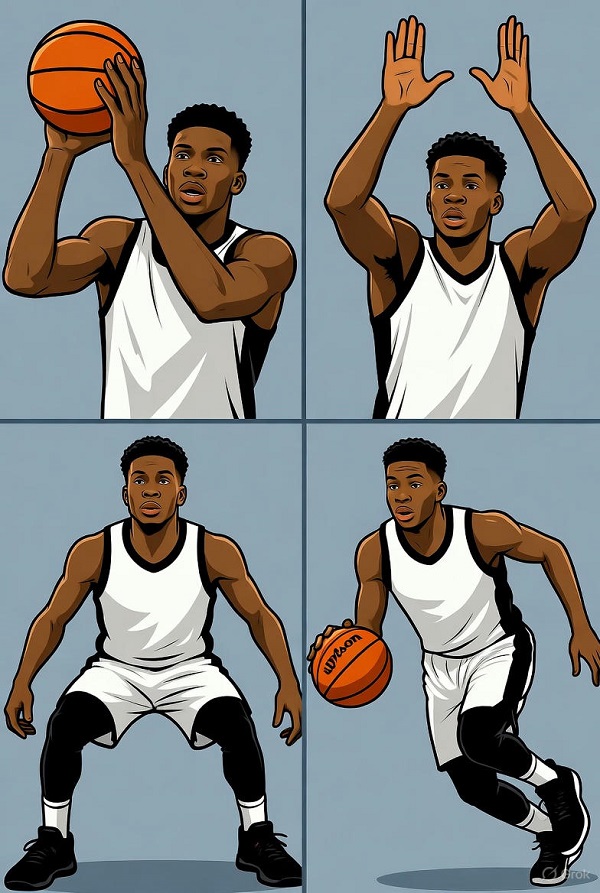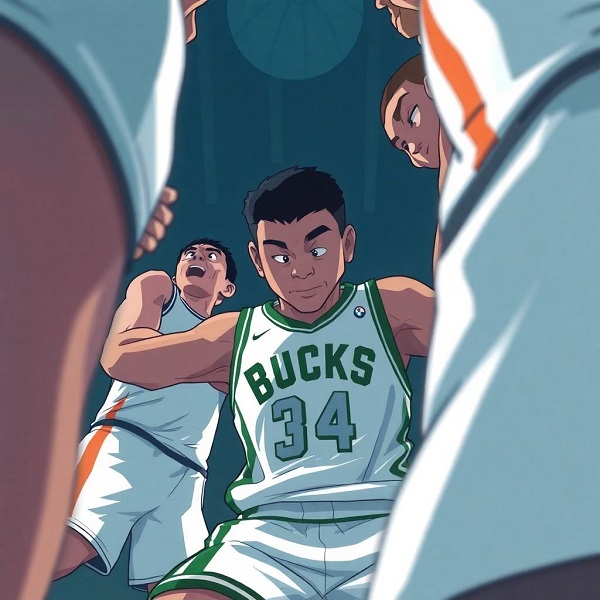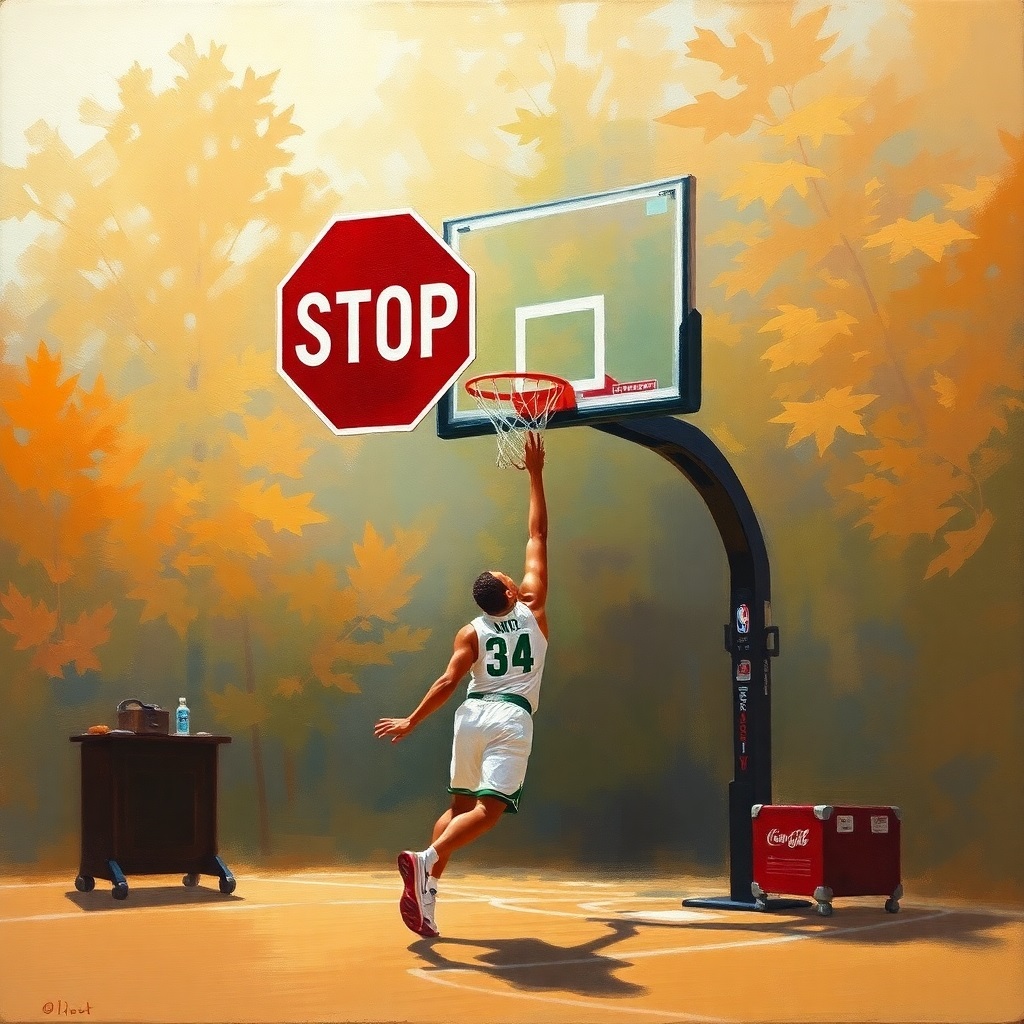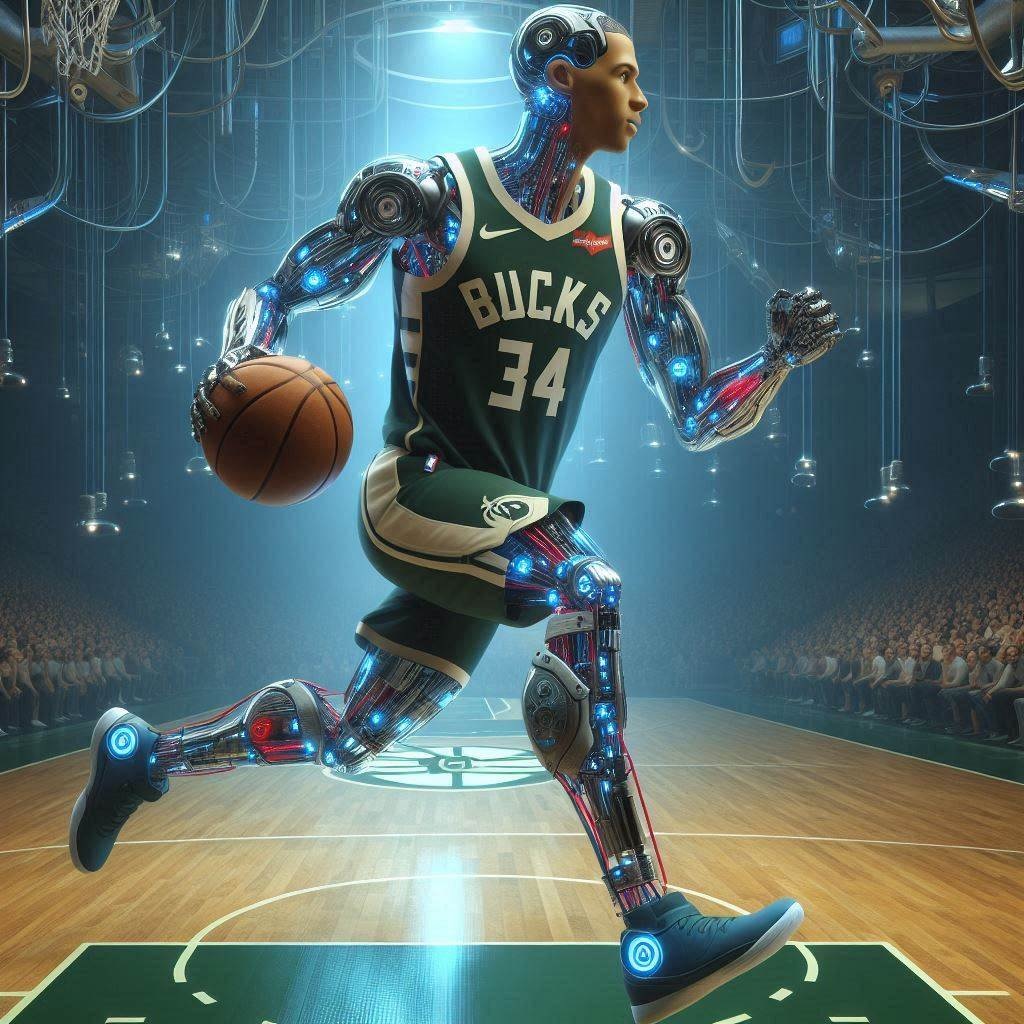Giannis Antetokounmpo, even after over a decade in the league has certain aspects of his game stubbornly underdeveloped. These weaknesses—ranging from inconsistent shooting to poor screening and defensive lapses—can be traced back to his unconventional entry into basketball. Unlike many NBA stars who honed their skills from childhood, Giannis didn’t start playing organized basketball until he was around 13 years old, first touching a basketball at that age and beginning professional play in Greece at 16. This late start meant he missed out on years of foundational training, where muscle memory for technical skills like shooting form, screen-setting technique, and quick decision-making is typically built. Instead, Giannis has relied heavily on his extraordinary physical gifts—length, speed, and power—to compensate, but these gaps persist, affecting both his individual performance and the Milwaukee Bucks’ team dynamics.
Struggles at the Charity Stripe and Beyond: The Shooting Woes

One of the most glaring and persistent issues in Giannis’ arsenal is his shooting, particularly from the free-throw line and long range. Despite years of practice and tweaks to his routine, his career free-throw percentage hovers at a mediocre 69.3%, dipping to 61.7% in recent seasons. This isn’t just a minor flaw; it’s a strategic vulnerability that opponents exploit, especially in playoffs, by fouling him intentionally to disrupt drives and force him to the line. Insiders have pointed out that if Giannis could convert at a higher rate—given he leads the league in free-throw attempts—he’d likely have more MVP trophies, as it would naturally boost his scoring average without additional shots.
Beyond free throws, his overall shooting profile reveals deficiencies. He’s historically struggled with three-pointers and mid-range shots, posting some of the lowest field-goal percentages in the league in these areas during playoffs. While recent developments show improvement in mid-range efficiency (hitting 54.5% over stretches and ranking second league-wide in certain periods), his form lacks the fluidity of players who drilled jumpers from a young age. And of course he has no mid range when it matters in the playoffs or harder regular season games. This ties directly to his late start: Shooting is a skill rooted in repetition and mechanics developed early. Without that foundation, Giannis’ attempts often look mechanical or forced, relying on power rather than touch. In half-court sets, defenses sag off him, daring him to shoot, which clogs driving lanes and limits his effectiveness as a playmaker.
The Art of the Pick: Why Giannis Can’t Set Effective Screens
Screen-setting might seem like a basic team skill, but for Giannis, it’s a glaring weakness that hampers the Bucks’ offense. Analysts describe his screens as “ghost screens”—half-hearted efforts where he doesn’t establish a solid base, sets them too high, or angles them poorly, allowing defenders to slip through easily. With his massive 7-foot, 253-pound frame, he should be a screening powerhouse, but instead, he often prioritizes rolling to the rim for his own scoring opportunities, leading to shoddy execution. Statistically, this shows: He averages just over two screen assists per game, generating only five points, and the Bucks rank near the bottom in off-screen efficiency at 0.5 points per possession.

This flaw is particularly damaging in pick-and-roll heavy schemes with stars like Damian Lillard, where effective screens create space for pull-ups or drives. Without them, the offense stagnates, forcing isolation plays. Again, the late start explains this: Screening requires precise footwork, body positioning, and timing—fundamentals drilled in youth leagues. Giannis, who jumped straight into high-level play without that base, treats it as an afterthought, leaning on his athleticism to dominate individually rather than synergize with teammates.
Giannis’ screening IQ is obviously something that can’t magically appear. He doesn’t understand angles at the most fundamental level. He also doesn’t understand
Defensive Reactions: Elite Talent with Occasional Lapses

Giannis is a defensive monster—his length and instincts earned him DPOY honors—but he isn’t flawless. Critics note he struggles with quick reactions in certain scenarios, like chasing guards around screens or maintaining off-ball awareness. He can “fall asleep” off the ball, failing to rotate promptly or box out, which leads to easy rebounds or cuts for opponents. While his help defense is elite, perimeter switching exposes slower lateral quickness against shifty guards, and his reactions in complex schemes can lag.
This isn’t about effort but ingrained habits. Starting basketball late meant less exposure to defensive drills that build anticipation and reaction speed. Players like Kawhi Leonard or Draymond Green, who started young, have that intuitive read-and-react ability honed over years. For Giannis, defense is more reactive to his physical tools than proactive fundamentals, making him vulnerable in playoff matchups where teams scheme to isolate these gaps.
Passing and Decision-Making: The Half-Court Hurdles
Giannis’ passing is another area where limitations shine through. While he averages solid assists, he’s not a “great passer,” as opponents like Alperen Sengun have exploited by collapsing the paint and forcing him into tough decisions. In half-court sets, he struggles with quick reads, often over-dribbling (sometimes for 14 seconds) or opting for isolation shots instead of hitting open teammates. This contributes to the Bucks’ low rankings in passes and assists, turning a potential juggernaut into a predictable unit.
Tied to his late start, decision-making under pressure requires basketball IQ built from countless reps in varied scenarios. Without early immersion, Giannis defaults to his strengths—driving or pulling up—rather than orchestrating like a true point forward.
Ball-Handling, Counter Moves, and Other Bad Habits
Giannis’ handle lacks creativity, making him predictable when trapped. He

doesn’t have a wide array of counter moves, often resorting to the same Euro-step or spin without variation. Bad habits compound this: fascination with inefficient isolation mid-rangers or dribble-up threes, poor off-ball movement, and inconsistent boxing out. These stem from relying on physical dominance rather than refined skills, a byproduct of skipping foundational years.
The Cost of a Late Bloom and Paths Forward
Giannis’ weaknesses aren’t from lack of effort—he’s worked tirelessly to improve. But starting at 13 meant building a skyscraper on a shallow foundation; the cracks show in technical areas requiring early muscle memory. For the Bucks to contend, Giannis must evolve beyond isolation heroics, embracing team play like better screens and quicker passes. At 30, there’s still time, but these lingering issues remind us: Even freaks of nature have human origins.





